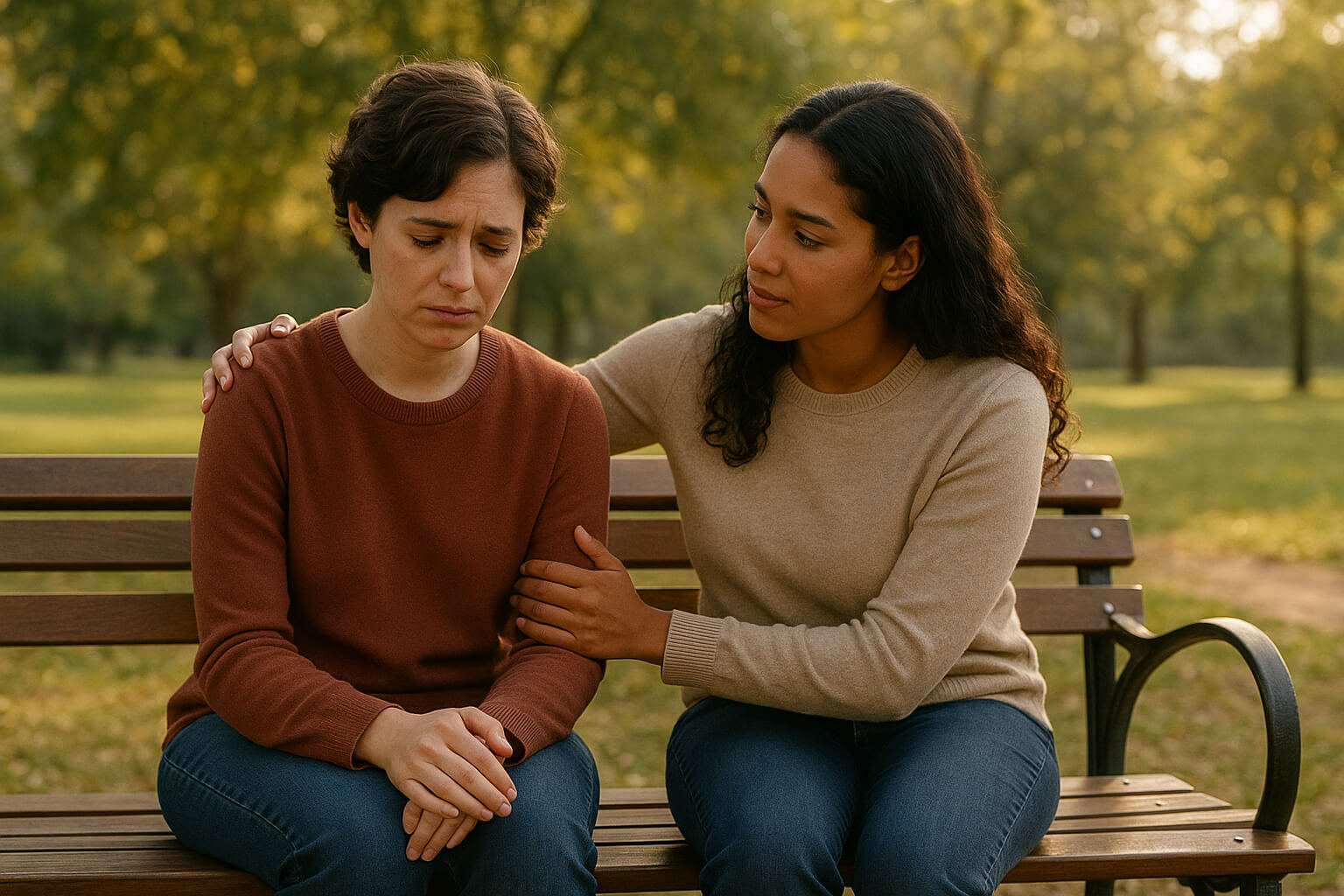August 24, 2025

Grief is a deeply human—and deeply individual—response to loss. It may come after the death of a loved one, the end of a relationship, a serious diagnosis, a miscarriage, job loss, or even a move away from home or community. It arrives in waves: sometimes sharp, sometimes quiet. Often, it reshapes how we see the world.
There’s no single way to grieve—and no timeline. But what helps most is compassionate self-care, meaningful connection, and support that meets you where you are.
Grief doesn’t wear one face. It can express itself in emotional, physical, mental, and behavioral ways. In addition to sadness, people may experience:
You’re not broken—you’re adapting. These responses are part of your body and mind trying to make sense of loss.
Both the American Psychological Association and NHS emphasize that grief rarely unfolds in predictable stages. Some days you may feel okay—others, undone. That’s not backsliding; it’s grief doing what it does: ebb and return.
Healing from grief doesn't happen in one leap—it happens in moments. Often, the simplest supports are the most powerful.
Naming emotions helps your brain process them. Try:
For more tools, see mental health guide.
Rituals help transform pain into presence:
You don’t need to let go to move forward. Rituals offer a bridge.
Grief can be overwhelming—but it shouldn’t lead to prolonged despair or disconnection from life.
Reach out if you experience:
In the U.S., call SAMHSA’s 24/7 helpline for free, confidential support: https://www.samhsa.gov/find-help/national-helpline
Or call 988 if you're in crisis.
What therapy can offer:
Group therapy can also be life-changing. Sometimes, the simple act of being heard by others who understand is the turning point toward healing.
Grief may be personal, but it thrives in community. We heal in relationship—not just through introspection.
Whether in person or online, grief groups allow you to share, listen, and be validated. Consider:
Many spiritual traditions offer mourning rituals that honor grief collectively. These might include prayer, storytelling, remembrance ceremonies, or acts of service.
Don’t underestimate help with logistics. Accepting assistance is not weakness—it’s wise.
For ideas on structured community help or mentoring relationships, explore mentorship model.
Grief is ongoing, but healing moments are possible. Here’s a flexible plan you can personalize:
Examples:
“This is raw grief.”
“I’m in the ‘making sense of it’ phase.”
Knowing where you are helps guide your next steps.
A therapist, grief counselor, mentor, spiritual advisor, or simply a “grief buddy” who checks in regularly.
Each week, ask:
If you’re supporting someone who’s grieving:
Grief needs presence, not fixes.
Offer specific support. Sit with them. Accept silence. It’s okay not to have answers.
Grief changes us—but it also reveals what matters most. Over time, many people find that loss, while never erased, becomes part of a renewed life. It softens. It teaches. It calls forward compassion.
If you’re ready for more guided help, start small:
Healing isn’t about moving on. It’s about carrying your loss with love, meaning, and care—and continuing to live fully, even as you remember.
Stay up to date with the latest tips, expert insights, product reviews, and step-by-step guides to help you grow, create, and succeed—no matter your industry or passion.